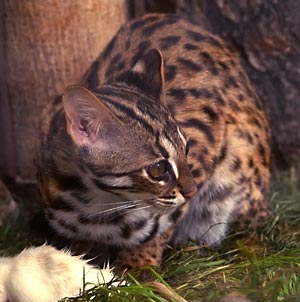Quickies
 |
| Leopard cat (CC: F. Spangenberg - Der Irbis) |
It's hard to say that cats are domestic at all, tamed is probably a better concept. Some would of course argue that it is cats who have tamed us humans, debatable I guess.
In any case this relationship has not been restricted to the common cat (Felis silvestris catus) but it has been known now that ancient East Asians managed to establish the same kind of relationship with a local feline of similar characteristics: the leopard cat (Prionailurus bengalensis). However at some point the Western cat took over and nothing remains of that ancient domestication event.
Jean-Denis Vigne et al., Earliest “Domestic” Cats in China Identified as Leopard Cat (Prionailurus bengalensis). PLoS ONE 2015. Open access → LINK [doi:10.1371/journal.pone.0147295]
Abstract
The ancestor of all modern domestic cats is the wildcat, Felis silvestris lybica, with archaeological evidence indicating it was domesticated as early as 10,000 years ago in South-West Asia. A recent study, however, claims that cat domestication also occurred in China some 5,000 years ago and involved the same wildcat ancestor (F. silvestris). The application of geometric morphometric analyses to ancient small felid bones from China dating between 5,500 to 4,900 BP, instead reveal these and other remains to be that of the leopard cat (Prionailurus bengalensis). These data clearly indicate that the origins of a human-cat ‘domestic’ relationship in Neolithic China began independently from South-West Asia and involved a different wild felid species altogether. The leopard cat’s ‘domestic’ status, however, appears to have been short-lived—its apparent subsequent replacement shown by the fact that today all domestic cats in China are genetically related to F. silvestris.